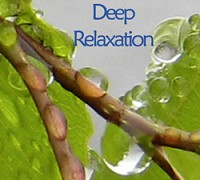I have received a number of emails asking questions about how I run my class and other technique related questions. I want to start sharing these emails so other folks can benefit from the conversations too. Below is an email from Melinda, wondering about how much talking do I do and what to do about students who fall asleep. I've expanded on my answer a little at the end of the post.
Hi Sara,
I just discovered your site and will be spending a great deal of time there I’m sure! I teach a weekly yoga class, mostly Iyengar-style, although I have started adding in Yin yoga and occasionally some restorative poses. I’d like to do an entire restorative class towards the end of my session (just before Christmas) but am unsure about all of the silence. I’ve noticed that, although my students like a longer savasana (10-15 minutes), many of them doze off – which I believe is a comment on our culture more than anything else. Anyway, I think 90 minutes of restorative postures would present a huge mental challenge – staying awake. On the other hand, I think too much chatter (by me) would be disruptive. How much instruction/information/teaching do you do once your students are in the pose?
Thank you, Melinda
Hi Melinda -
I’m glad you found my website. I’d like to post your question and my answer on my blog as a new post if you don’t mind. Lots of people have asked me this question so I think I should put a post up. I think we all have a hard time being quiet – even us, the teachers (especially us?). We want to keep explaining, help our students get everything just right. But really we need to let them settle into the quiet of the pose and experience the kind of relaxation that comes from “not doing.” If they fall asleep....well, I guess they are tired. Of course some people are the lucky kind who fall asleep the instant their head hits the pillow so for restorative, their challenge might be to keep more awareness of breath and try to keep their mind from turning off.
My class is 75 minutes. The first 15 I do welcome, announcements, short talk on being comfortable and asking for help, demo the poses and then a tiny warm up and centering. The next hour we do 6 poses including Savasana. Each pose gets 10 minutes which includes set up, settling in and coming out. I do talk some – I like to settle people in to each pose by talking them back into relaxation – but I try to be quiet for most of the pose. I give a reminder at the 1/2 way point to move the body or the head if they have become uncomfortable or if the person is in a twist or something that requires balance on both sides. I like to play an Om CD or Shamanic Dream with the heart beat rhythm. Sometimes I play the gong or the crystal bowl at the end for Savasana.
I’ll think about this some more and try to come up with a more coherent answer and put it up on my blog. I’ve got a busy week though so it might not be right away. Thanks for writing and best of luck on your class. I’m sure your students will love it.
Sara
I just taught two different restorative classes over the past week: one for teachers in training and one for my regular students. I tried to observe how much talking I did to the students in each of these classes so I'd have a more definite answer.
What I noticed was that with the teacher trainers I talked quite a bit more. I was thinking of their class more as a training session - which it was. I wanted to impart as much knowledge in the 4 hours I was with them as possible.
With my regular class I was pretty quiet this time. Just about everyone who attended has been to my class before so they know the ropes and don't need a lot of instruction. But I do still talk them down into each pose, settling them into relaxation. I tell them the 1/2 way point so they take the pose on both sides of their body. And I talk them up each time by inviting them to take 5 smooth, deep breaths and then carefully exit the pose. I remind them to be mindful and quiet as they transition from pose to pose. And I remind them to ask me if they can't quite get comfortable.
That sounds like it wouldn't leave a lot of time for quiet but it does. I think quiet time in restorative is as important or even more important than instruction time.
Please feel free to email me with your questions or comments on your experience and I'd be happy to answer and share more here.
Happy Solstice!























